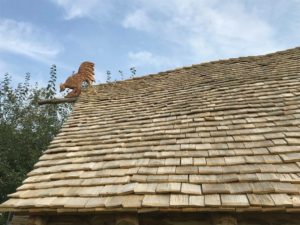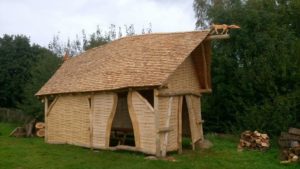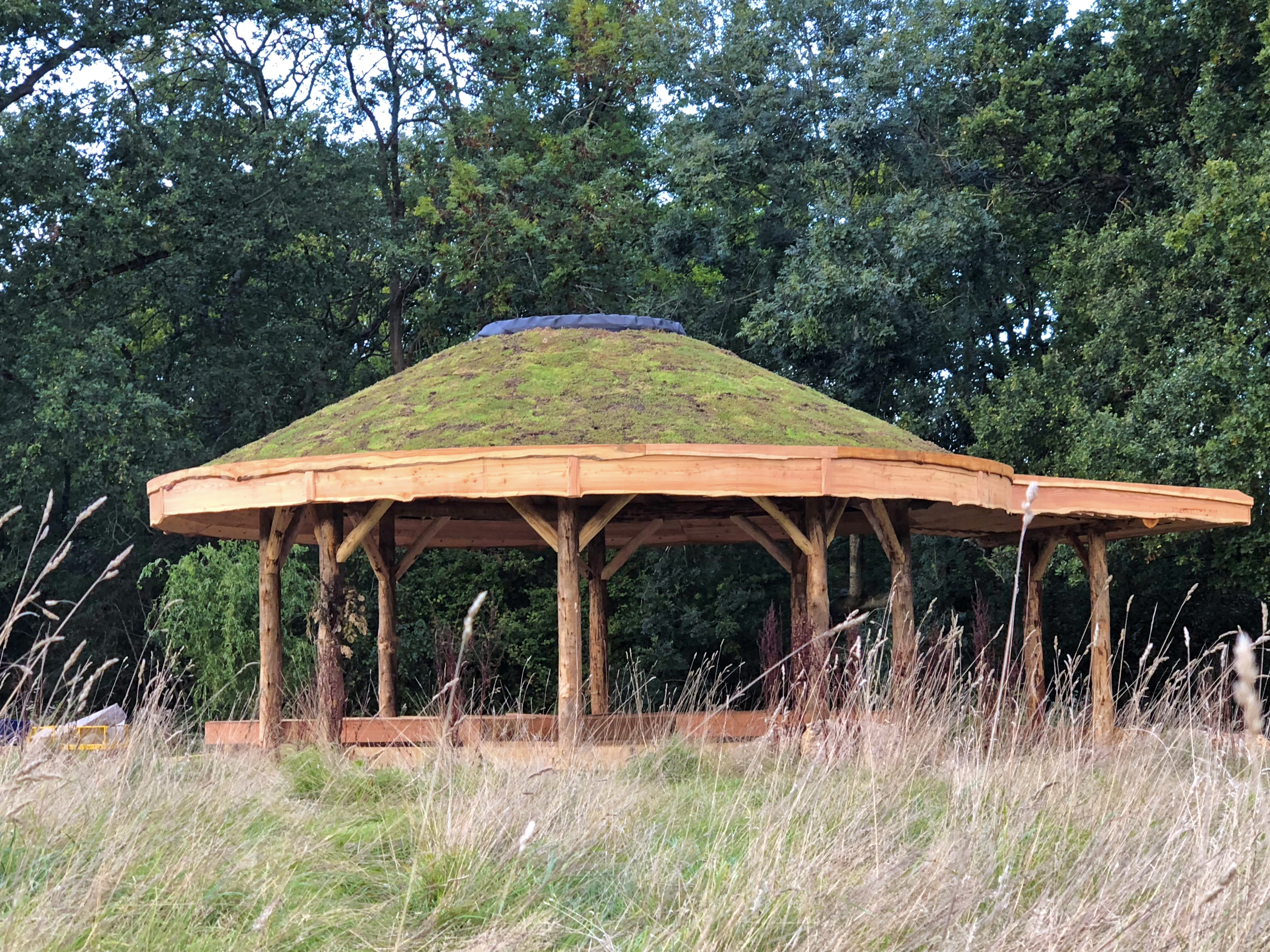
Local materials | sustainable building
We’re passionate about using local materials. Everyone on our team has done our time in native British woods and though we now spend more days putting timbers up than bringing them out of the woodland, our roots are still in the coppice.
Native British woodlands are a vastly neglected sustainable resource. That’s why whenever possible we encourage clients to use their own timber in construction; it keeps the building very local and very personal. Over the years we’ve realised that it creates a strong and positive attachment between building and owner when you can look at your building and remember it as trees.
A realistic approach to other sustainable materials and methods
For us it makes no sense to use sustainable materials for frames alone. So we try to use as many local and sustainable products as possible on every build. Straw bales for insulation, green roofs or cedar shingles to name but a few.
It’s important to stress though that we’re also realists. We know there are times when compromises need to be made or a conventional approach is more appropriate. Our experience means we can help to advise which approach is best suited to a particular project or budget.













Coppicing | benefits homeowners, wildlife, woodlands and the rural economy
Sweet Chestnut, hazel, oak, ash, birch, willow, lime and alder. All coppice well and it makes these trees a great resource for sustainable building – perfect for everything from hazel fence panels through to timber-framed homes.
Coppiced woodland is harvested in sections on rotation; the length of the cycle depends on the species and how the wood is to be used. Willow for weaving needs only four years between harvests while oak for firewood may need fifty years. Different trees and a range of purposes means there are always materials on hand.
Great news for wildlife
Regular coppicing also provides a rich variety of habitats for flora and fauna as cutting the trees allows light to reach the woodland floor. Bluebell, anemone, primrose and many other flowers grow vigorously, brambles provide cover for small mammals and piles of deadwood encourage insects, all of which provide a food source for a range of butterflies and birds.
In managed woodland these populations move around the recently cut sections. If a wood ceases to be cropped, light is reduced, vegetation becomes sparse, populations collapse and once-common species become rarities.
Many British woodlands have been poorly managed for decades. However the last ten years have seen coppices being brought back into use thanks to increased demand for the products the woodland can provide.
All of which means your building helps to increase native ecological diversity and support the local, rural economy by increasing demand for traditional crafts. Every structure means someone fells, someone extracts, someone mills and someone builds. Keeping materials local benefits us all – the local rural economy, the management of local woodland and the communities we live in.










